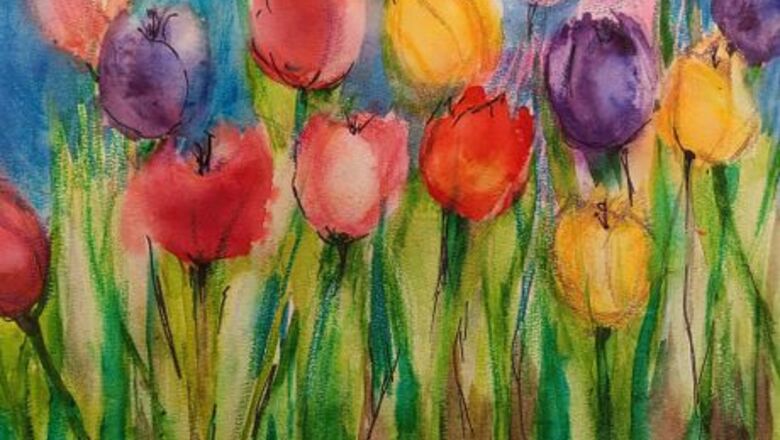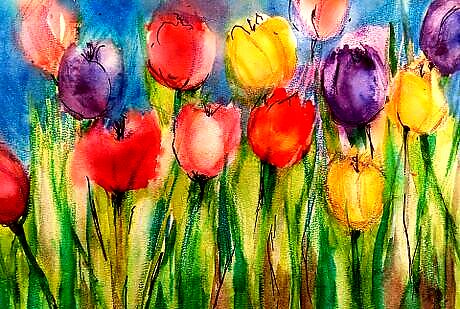
views
Gather your supplies and find a table to use as your work surface. Fill a jar or plastic container with water, open and wet your paints, and locate two all-purpose craft brushes, a 1/2 inch flat and a pointed one. Use a sheet of student grade watercolor paper attached to the pad and place it in either alignment. A #2 pencil and eraser are needed for preliminary sketches.
Make swatches of each color from your paintbox on the practice sheet. Familiarize yourself with the supplies by working on a piece of scrap paper, preferably a sheet of watercolor paper from your pad. On the lid of the paintbox, or improvise a mixing tray by using a plastic picnic plate, blend two colors to make new ones. Keep samples of combinations and jot down what comprised them.
Warm up by giving your brushes a whirl. With the flat brush try wetting a section of paper and dropping in colors. Fill your flat brush and paint lines with it using the broad side, then the narrow edge. Use your small pointed brush to make colored sketches and to write letters and numbers. Change your water often and keep the mixing area and your work area clean. Put supplies on the side of your dominant hand to avoid dropping paint accidentally as you pass over your paper.
Sketch (lightly) many tulip shapes on your watercolor paper. They are simple cup-like shapes with jagged tops. Make them at least as big as an egg and draw them just above the centerpoint of your paper. Draw stems coming off the bottom of the cups or blossoms and continuing to the bottom edge of the paper. Sketch the leaves as dagger-shaped with pointed tops.
Paint the tulip blossoms. Wet an area of the mixing tray with clean water and add a small amount of paint to it. Test it on your scrap paper and adjust it so that the color is bright but transparent enough for the white paper to show through. Paint the flowers all one color or mix it up as desired. If desired, to give the illusion of light striking flower, wet it. Then, paint only one side and let the color seep across the shape. Be consistent so it looks like the light is striking the flowers from one direction.
Paint the flower stems making them thick enough to support the flower, about a 1/4 inch. Paint leaves in one stroke. Charge or fill your flat brush with green and starting from the bottom paint upward twisting the brush slightly and lifting it at the top to give you a pointed leaf.
Consider this your first layer. Let it dry thoroughly, stand it up and view it from a slight distance. Think about how you want to finish the background. Sky is always representative of an outdoor garden. Perhaps you want to show some brown around the bottom of the plants for earth. Yellow is always lovely and makes viewers think of sunshine. Paint the background and let it dry. Again set it up and study it.
Finish with enhancements, details and enriched areas of color. Another layer of paint in places can give the painting a finished appearance. Use the pointed brush for details; draw lines as separations to represent petals on the flowers, growth lines on the leaves. A tiny edge of dark green along the stems can represent roundness. Work until it satisfies you and then QUIT! Overworking is a danger and too much fiddling can take the freshness away.

Try finishing with another medium such as Sharpie, colored markers or ordinary crayons. Have fun. It is only a piece of paper and if you have a pad, there's plenty more sheets to fill. Repeat this lesson and challenge yourself to do it differently. Perhaps show depth by having the foreground tulips bigger, brighter and detailed while distant ones get smaller and dimmer. Perhaps use different colors the second time. Or, stagger the blossoms on the page so they are growing randomly to give less of a planned, neat look.
Sign and show your work. Hang it up to be viewed and admired. When you become an artist, you never see the world the same way again. Your eyes take in details of shape, color and composition and you want to transfer ideas to paper. Have fun!




















Comments
0 comment